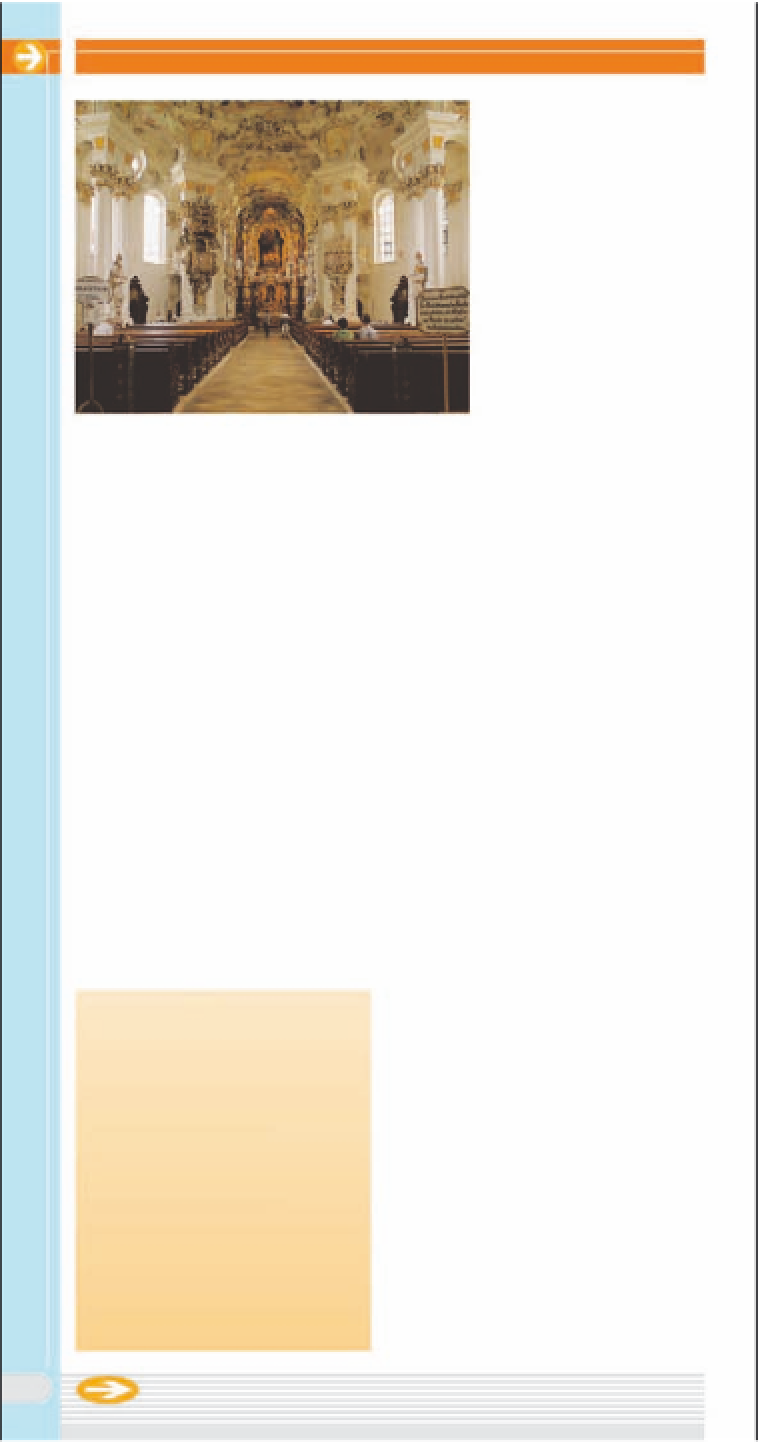Travel Reference
In-Depth Information
Great's acquisition of the
arm relic of St Boniface
elevated the monastery
to the most important
cult site of the saint in
German-speaking coun-
tries. Built between 1669
and 1679, the Baroque
monastery is still intact
today. Kaspar Feichtmayr
of Weilheim built the
church with twin towers
in the Italian late Baroque
style. Famous in its time,
the holdings at the mon-
astery library included the
Carmina
Burana
- the most important col-
lection of medieval minstrel songs.
The manuscript dates back to the
13th century and is now housed at
the Bayerische Staatsbibliothek.
Following secularization, the
monastery complex was used
for a time as a glassworks. At the
beginning of the 19th century, it
housed an institute for optics led
by the famous optician and physi-
cian Joseph von Fraunhofer
(1787-1826), who discovered the
waves in the solar spectrum that
were named after him. Today,
the monastery accommodates
institutes of pedagogy and
theology of the Salesian Order.
d
Map S3
•
(0 88 57) 880
•
Kloster:
Open 9am-5:30pm daily
•
www.kloster-
benediktbeuern.de
•
Glashütte:
Open 9am-5pm daily
•
Free
^
Kloster Rottenbuch
Ornate Rococo interior of Wieskirche
$
Wieskirche
Known simply as the Wies-
kirche, the pilgrimage church
Zum Gegeißelten Heiland auf der
Wies near Steingaden (1746-54)
is renowned as a prime example
of German Rococo. It represents
the work of Dominikus Zimmer-
mann, the famous architect and
stuccowork master from Wesso-
brunn, at his peak. UNESCO
listed the church as a World Her-
itage Site in 1984.
d
Map R3
•
(0 88 62) 93 29 30
•
Open in summer
8am-7pm daily, in winter 8am-5pm
daily
•
www.wieskirche.de
•
Free
%
Kloster Benediktbeuern
Benediktbeueren (739) is one
of the oldest monasteries in the
foothills of the Alps. Karl the
Wessobrunn Stuccowork
In the 17th and 18th centuries, the
most important stuccowork mas-
ters came from around the mon-
astery at Wessobrunn. Johann
Schmuzer (1642-1701) is regarded
as the founder of the Wessobrunn
school. The Schmuzer, Zimmer-
mann, and Feichtmayr families
spread its fame throughout Europe.
Stucco masterpieces are found in
the monasteries and abbeys of
Wessobrunn, Ettal, Rottenbuch,
Weingarten, Zwiefalten, Ottobeuren,
Bad Wörishofen, and Steingaden.
Founded in 1073 by Duke
Welf I, this monastery for
Augustine Canons survives to
this day. It features a rare blend
of Romanesque, Gothic, and
Rococo architectural styles.
In the mid-18th century,
Joseph Schmuzer and his son
decorated the interior with
lavish stuccowork.
d
Map R3
•
(0 88 67) 10 08
•
Open 8am-6pm
daily (to 7pm in summer)
•
Free
122
Munich composer Carl Orff (1895-1982) set parts of the medieval
Carmina Burana
to music in 1937.


































